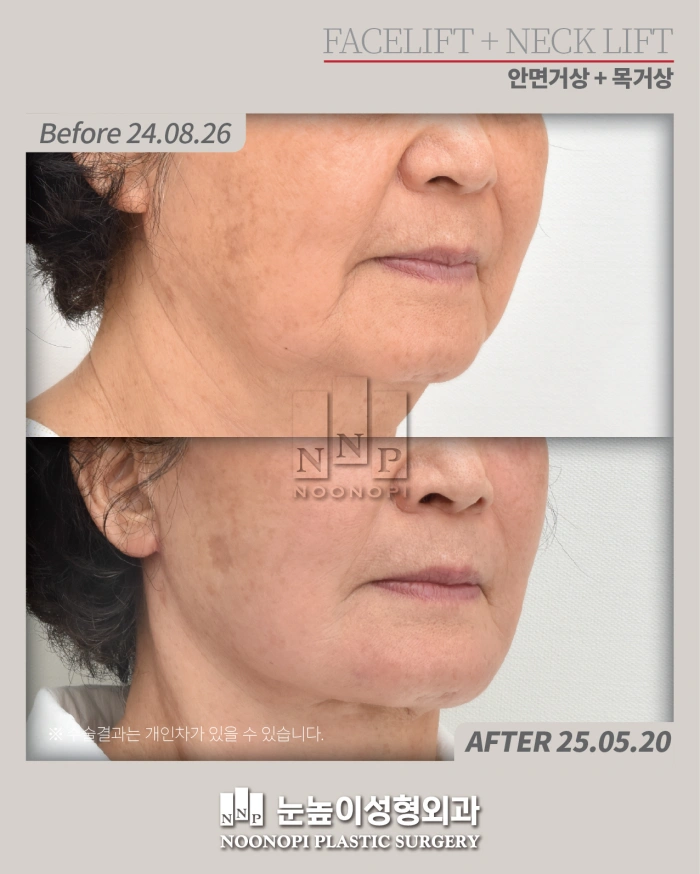Nasolabial Folds (Smile Lines): Causes & The Best Treatments
2025-08-13
While smile lines can be a charming sign of a happy life, the deep creases that run from the sides of the nose to the corners of the mouth—known as nasolabial folds—can often make us look older, sadder, or more tired than we actually feel.
If you've tried "smile line patches" or facial exercises with little success, you're not alone. The reason these methods often fail is that they don't address the true underlying causes of why these folds appear and deepen over time.
As a board-certified plastic surgeon at Noonopi Clinic in Seoul, we are here to provide a clear guide to the real causes of nasolabial folds and the most effective treatments available, from simple injections to definitive surgical solutions.
Why Do I Have Deep Nasolabial Folds?

The formation of smile lines is not just a matter of skin aging. It's a complex interplay of your unique anatomy and the aging process.
1. Your Natural Bone Structure
Some people are genetically predisposed to deeper smile line. If the bone of your mid-face, specifically around the nose (the piriform aperture), is naturally recessed or concave, there is less structural support for the overlying soft tissue. This creates a natural valley that becomes more pronounced with age.
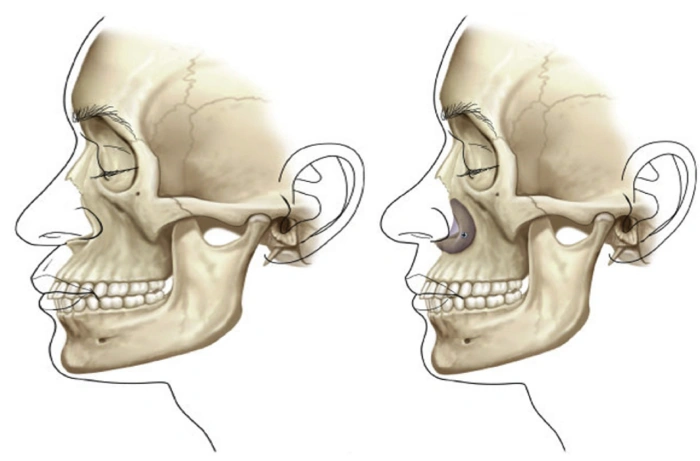
Right: Implant can be used to augment the mid-face.
2. The Facial Aging Process
For most of us, smile lines become a concern due to the natural process of aging, which involves three key changes:
- Fat Pad Descent: The youthful fat pads in our cheeks lose volume and begin to sag downwards due to gravity. This sagging tissue bunches up against the ligaments that connect your skin to muscle, creating the prominent fold.
- Loss of Skin Elasticity: The production of collagen and elastin—the proteins that keep skin firm and supple—decreases over time. The skin becomes thinner and less able to resist creasing.
- Ligament Prominence: Strong ligaments hold the skin in place around the mouth. As the cheek tissue above sags, these tethered points become more noticeable, like a tent pole holding up a sagging canvas.
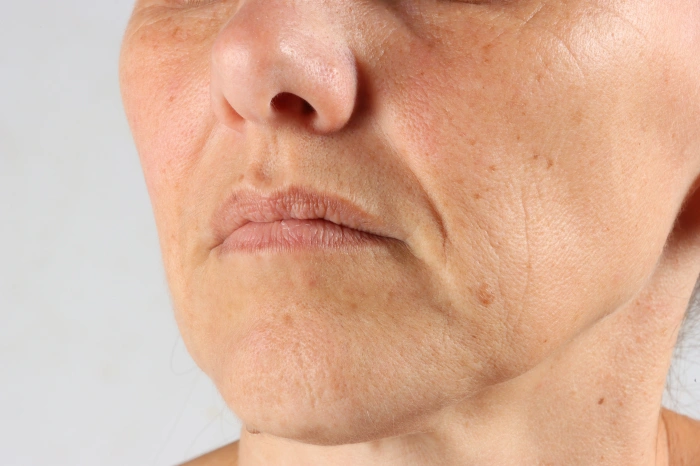
3. Repeated Facial Expressions and Lifestyle Habits
Frequent smiling or habitual facial movements can deepen smile lines over time. Interestingly, in patients with facial paralysis, the nasolabial fold on the paralyzed side often appears lighter than on the unaffected side, clearly demonstrating the impact of facial muscle activity on mid-cheek aging.
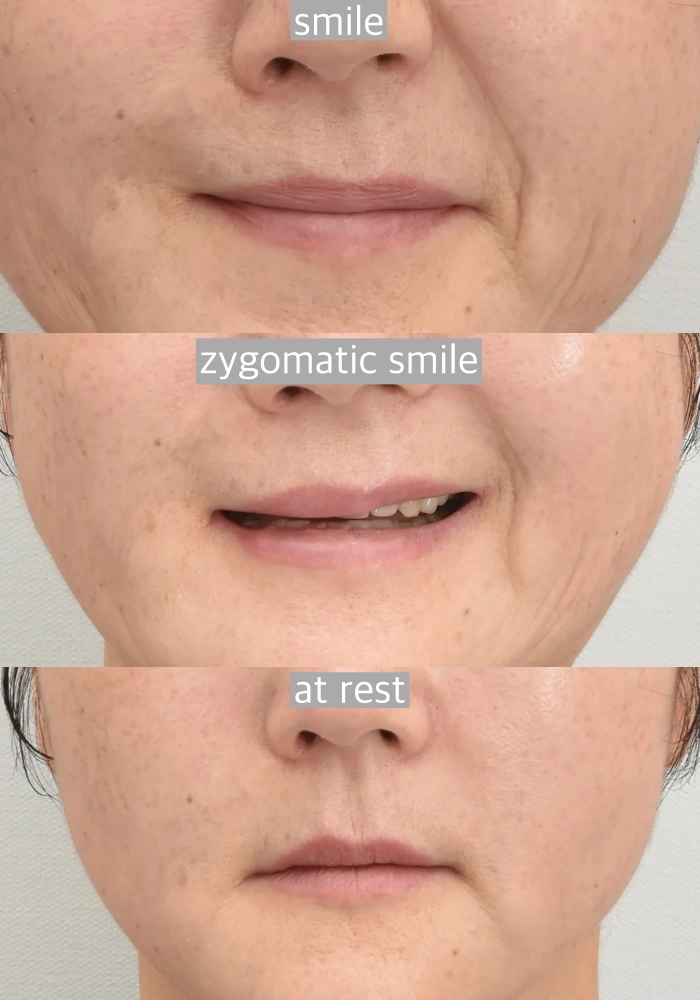
What Are the Best Treatments for Smile Lines?
The right treatment for your nasolabial fold depends entirely on the primary cause. Here’s a breakdown of the options, from least to most invasive.
Non-Surgical Treatments
1. Dermal Fillers (e.g., Hyaluronic Acid) or Fat Graft
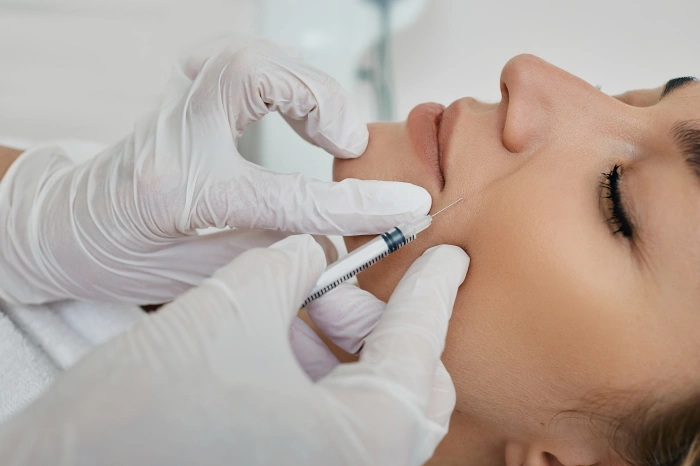
This is the most common non-surgical treatment for smile lines. Filler is a gel-like substance is injected directly into the crease to lift the skin and add volume. In contrast, fat grafts are autologous, meaning they use your own tissue, which gives them a high level of biocompatibility for restoring volume.
- Best For: Younger patients with good skin elasticity whose folds are mainly caused by a lack of volume or early skeletal hollowness.
- Limitations: If your folds are caused by significant cheek sagging, adding filler can result in a puffy, overfilled, or unnatural look. It's a temporary solution that requires repeat treatments.
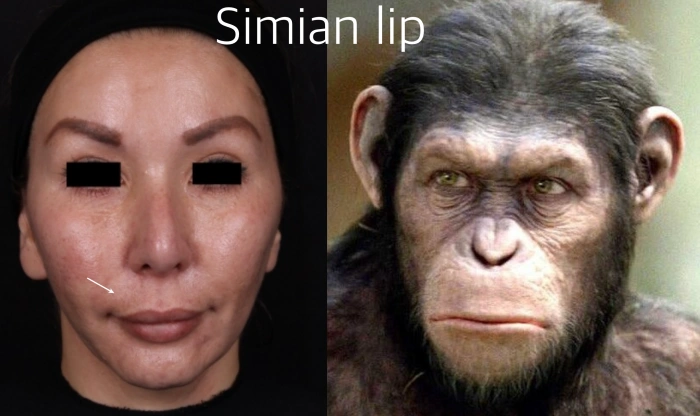
2. Thread Lifts
Medical-grade threads with small barbs or cones are inserted under the skin to grip and physically lift sagging cheek tissue.
- Best For: Patients in their 30s and 40s with mild to moderate skin laxity who want an immediate lift without the downtime of surgery.
- Limitations: The results are temporary (typically 1-2 years) and cannot correct severe sagging. It's a great "bridge" treatment but not a permanent fix.

The Definitive Surgical Solution: Facelift Surgery
For patients with significant sagging and deep-set smile lines, surgery offers the most powerful and long-lasting improvement.
A common misconception is that surgeons can simply cut out the fold. This is almost never done, as it leaves a very visible scar. Instead, we perform a midface lift or a SMAS facelift.
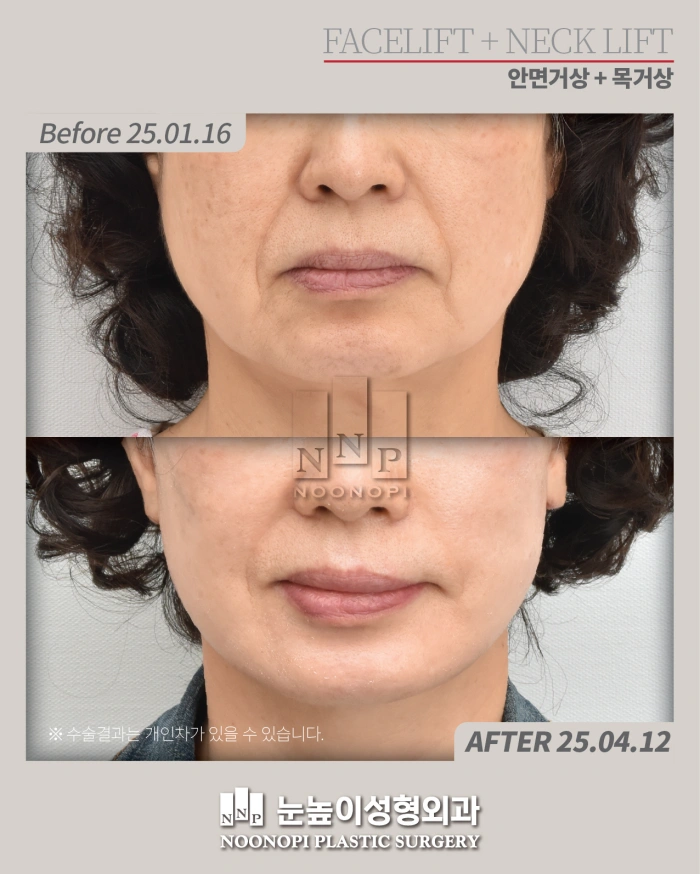
This advanced surgical approach addresses the root cause of the problem. It goes beneath the skin to lift and reposition the deeper foundational layer of the face (the SMAS) and the descended cheek fat pads back to their original, youthful position. By restoring the structure of the cheek, the heaviness of mid cheek is naturally softened in a way that looks completely natural and lasts for years.
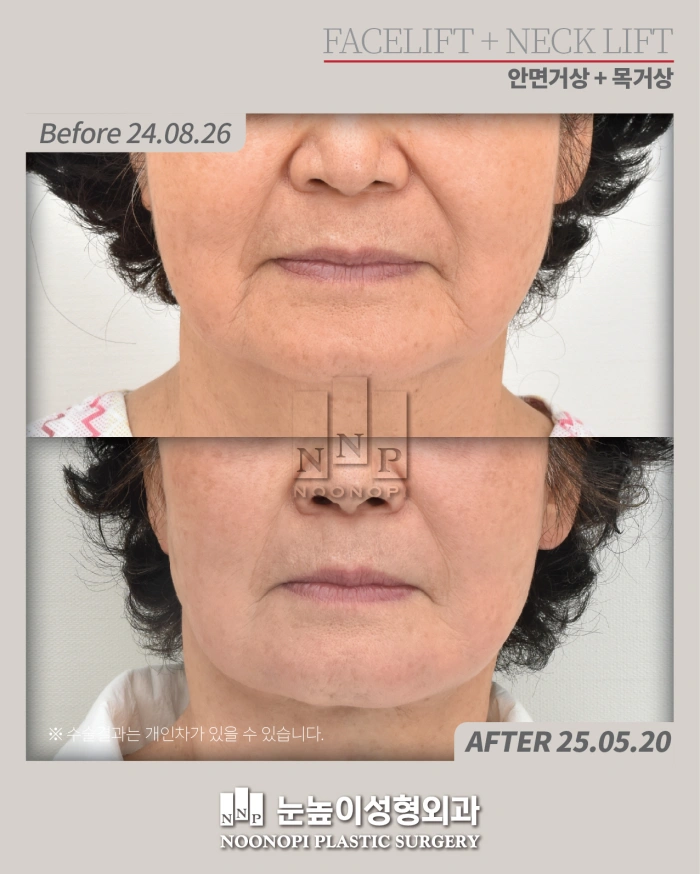
Conclusion: An Accurate Diagnosis is Key
There is no single "best" treatment for nasolabial folds. The right solution for you depends on a careful analysis of your unique facial anatomy and the primary cause of your concern.
- Is it a volume deficit? Filler or fat grafting may be best.
- Is it mild sagging? A thread lift could be a great option.
- Is it significant tissue descent? A facelift is the gold standard.
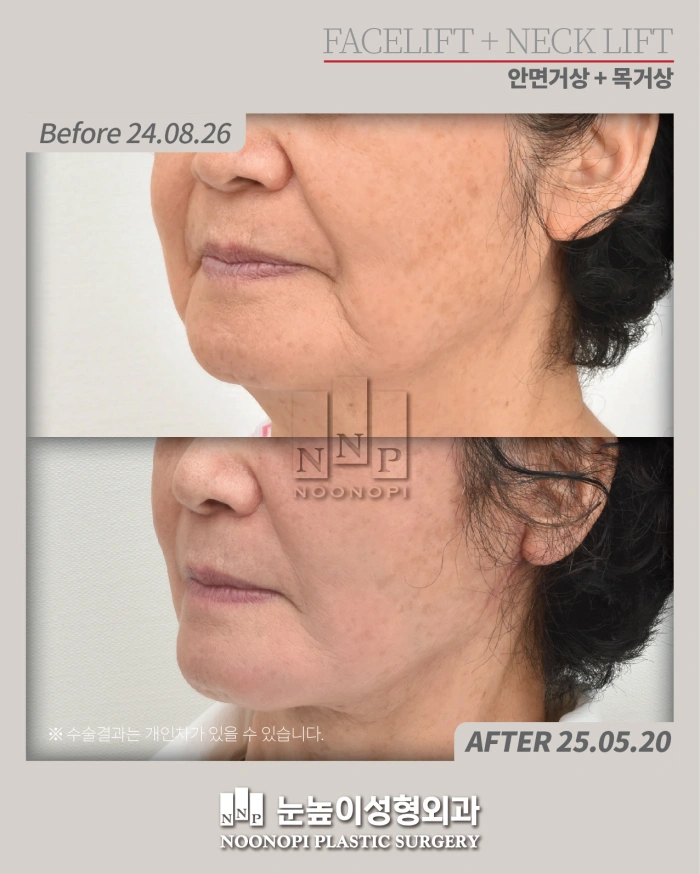
At Noonopi Plastic Surgery in Korea, we specialize in accurately diagnosing the cause of your concerns to recommend the most effective, personalized treatment plan.
📌 Learn more about the treatment via WhatsApp
